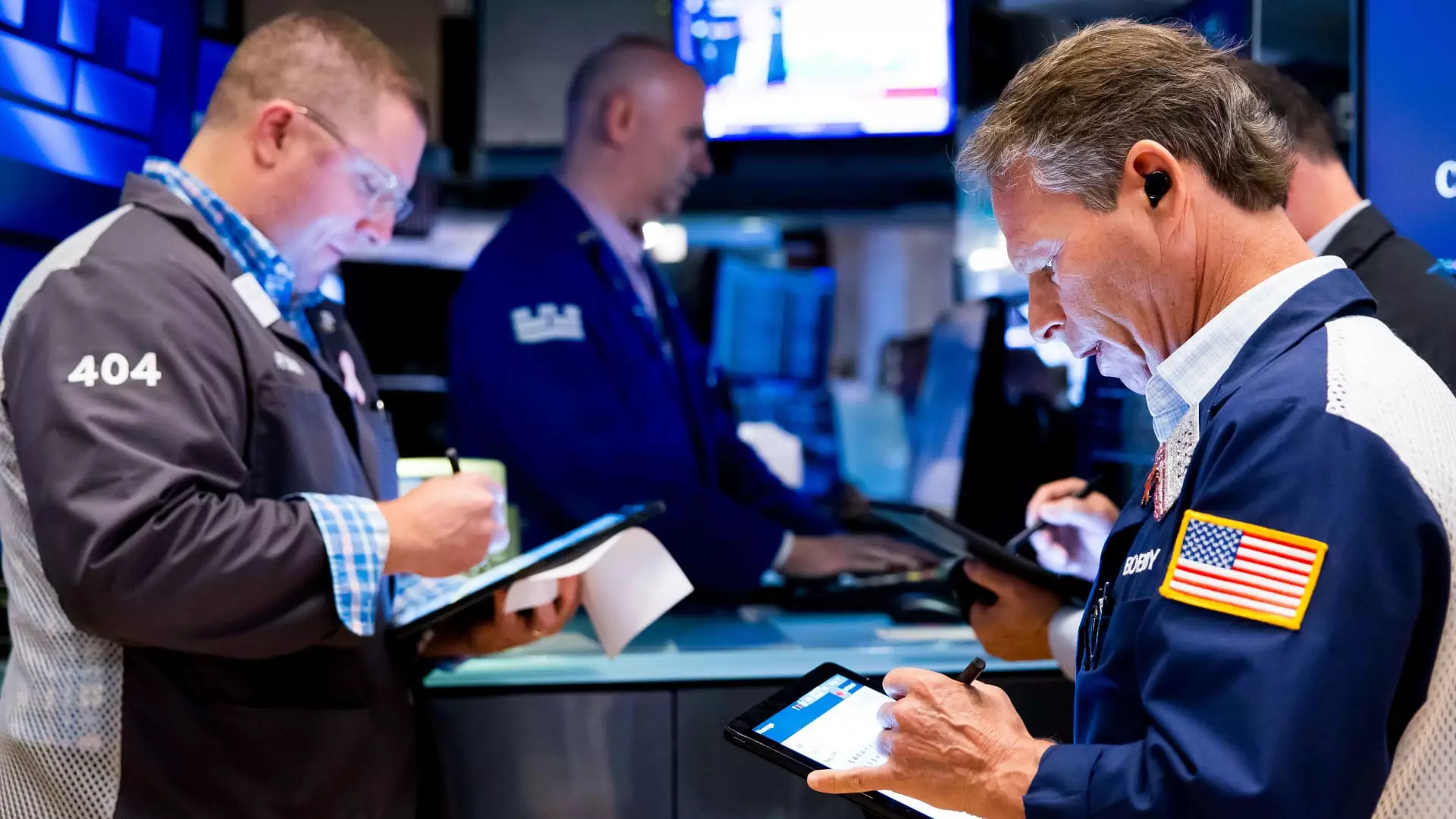The recent rally in U.S. equities, culminating in record-breaking highs for the S&P 500 and Nasdaq, might appear as a testament to economic resilience. However, beneath this shiny veneer lies a fragile foundation—a mirror to the insidious optimism that often accompanies market euphoria. While investors celebrate the so-called robust job figures and the resilience of Wall Street indices, it is essential to question whether these gains truly reflect economic strength or simply manufactured confidence driven by transient factors.
Economists hailed the June jobs report as better than expected, with nonfarm payrolls rising more than anticipated. Yet, a deeper analysis reveals potential cracks in this narrative. The modest increase of 147,000 jobs, though surpassing forecasts, still points to a sluggish labor market recovery. The unemployment rate, dropping to 4.1%, could be construed as a positive sign, but it also raises concerns about the quality and sustainability of these jobs. Are we witnessing real progress, or merely a statistical airbrushing of underlying weaknesses? The recent dip in private payrolls, as reported by ADP, hints at vulnerabilities that are masked by headline figures.
This dissonance underscores a critical reality: the market’s optimism may be more reflective of central bank policies and geopolitical narratives than genuine economic vitality. The Federal Reserve’s stance, signaling no immediate rate cuts following the jobs report, suggests a cautious, perhaps even alarmed, approach to an economy that risks overheating or instability lurking beneath the surface.
The Market’s Illusion of Certainty Amid Political and Global Turmoil
The political arena exacerbates this fragile optimism. President Trump’s trade negotiations, especially with Vietnam and other global partners, have become a turbulent backdrop that complicates the investment climate. While the recent trade agreement with Vietnam might seem like a positive development, it is a temporary patch rather than a comprehensive solution to persistent global trade tensions. Investors’ hopefulness, in this scenario, veers dangerously close to complacency—expecting smooth resolutions where real negotiations could become protracted and unpredictable.
Additionally, the legislative progress on the tax bill equation injects a dose of political stability, but it should not obscure the fact that policy volatility persists. Market participants appear eager to sideline these risks, focusing instead on short-term gains. Yet, history suggests that such optimism, especially when rooted in expectations of continuous policy support, often leads to overconfidence—an illusion that markets can sustain near-constant growth without repercussions.
Furthermore, the relatively short trading session coupled with the upcoming holiday distorts the true state of the market’s health. Thin trading volumes tend to exaggerate movements, creating a false sense of momentum. The fact that the indices closed on record highs amidst an environment of geopolitical uncertainties and economic contradictions highlights just how disconnected market performance can be from real-world fundamentals.
The Price of Overconfidence and the Risks Ahead
This relentless pursuit of record highs risks fostering an environment where overvaluation becomes the new normal. Investors, fueled by easy monetary policy and optimistic narratives, overlook the warning signs that signal potential turbulence. The rapid escalation of stock prices might seem empowering, but it also inflates a bubble that could burst at the slightest provocation—be it a sudden slowdown in job growth, a flare-up in trade disputes, or an unforeseen geopolitical crisis.
While the market seems to shrug off these concerns, a critical eye warns that this resilience is superficial at best. The ever-present threat of a policy misstep, international instability, and an overheated economy that refuses to cool create a volatile cocktail. The Federal Reserve’s current stance of waiting and watching might be prudent, but it also risks allowing vulnerabilities to fester, only to explode later.
In a centrist liberal perspective, such overconfidence is misguided. It exemplifies a blind faith in the fundamentals that ignores the structural and systemic risks that lurk beneath headlines. Genuine economic strength requires sustainable growth, equitable job creation, and policies that address inequality—elements that are conspicuously absent in today’s market rally. While the short-term gains are tempting, they come at the expense of long-term stability, which is vital for a healthy and inclusive economy.


Leave a Reply